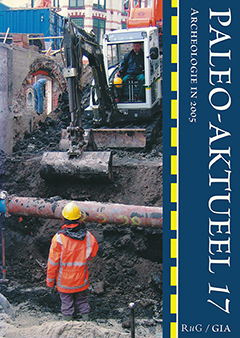Vegetatieontwikkeling en landgebruik in de Monte Sparviere (Calabrië, Italië)
Samenvatting
Fontana Manca: vegetation development and land use in the Monte Sparviere (Calabria, Italy) in the Late Neolithic and Bronze Age. The pollen containing part of a 3-m long core from the eastern Pollino Mountains covers the final stage of the Neolithic and most of the Bronze Age. Quercus cerris (Turkey oak) dominates the arboreal pollen set, accompanied by one or more deciduous oak taxa (most likely Q. frainetto and / or Q. pubescens). The increase of Ostrya-type (hophornbeam) and Abies alba (Silver fir) as well as the increase of Fraxinus ornus (manna-ash) in Zone II most probably indicates a thinning of the forest owing to clearing activities and / or the herding of cattle in the montane forests. Fontana Manca (‘Failing Fountain’) was fed by surface water and percolating water. The local pollen record reflects a variable water level with marshy conditions for most of the time and open water during a short period preceding the start of the Bronze Age. The occurrence of palynomorphs Type 361 and Type 480 in the upper part of the pollen diagram (Zone III) indicates intensified human impact in the Middle to Late Bronze Age. The increase of these types together with the further expansion of an endemic alder species (Alnus cordata) points to quite erosive conditions. Hardly any signs of plant cultivation (trees, cereals) could be traced, suggesting the local absence of permanent habitation for the period concerned.

